Hearts and Minds Harmony Week Thinking 2022
Understanding and Embracing
Diversity
Universal themes focussing on Home
and Family
Is ‘home’ a place? A feeling? An idea?
A person/ people?
An old proverb says
“Home is where the heart is.”
Do you think this is true or false?
Why?
Habits of mind:
Metacognition
Listening with Empathy and Understanding
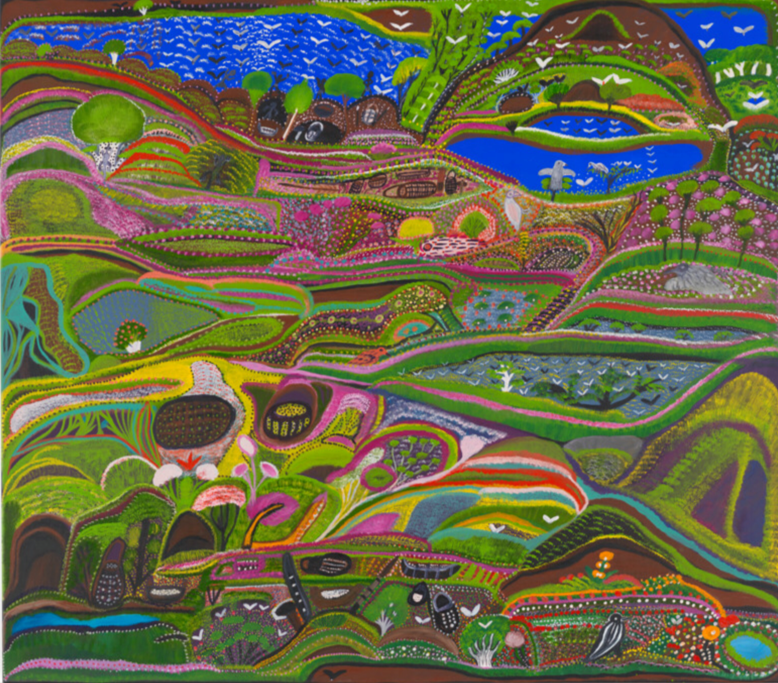
Our Harmony Week Story Link:
https://www.youtube.com/watch?v=qeZ1MVihD9g
A story to encourage thinking about differences and similarities of children around the world and to foster empathy and compassion for others.
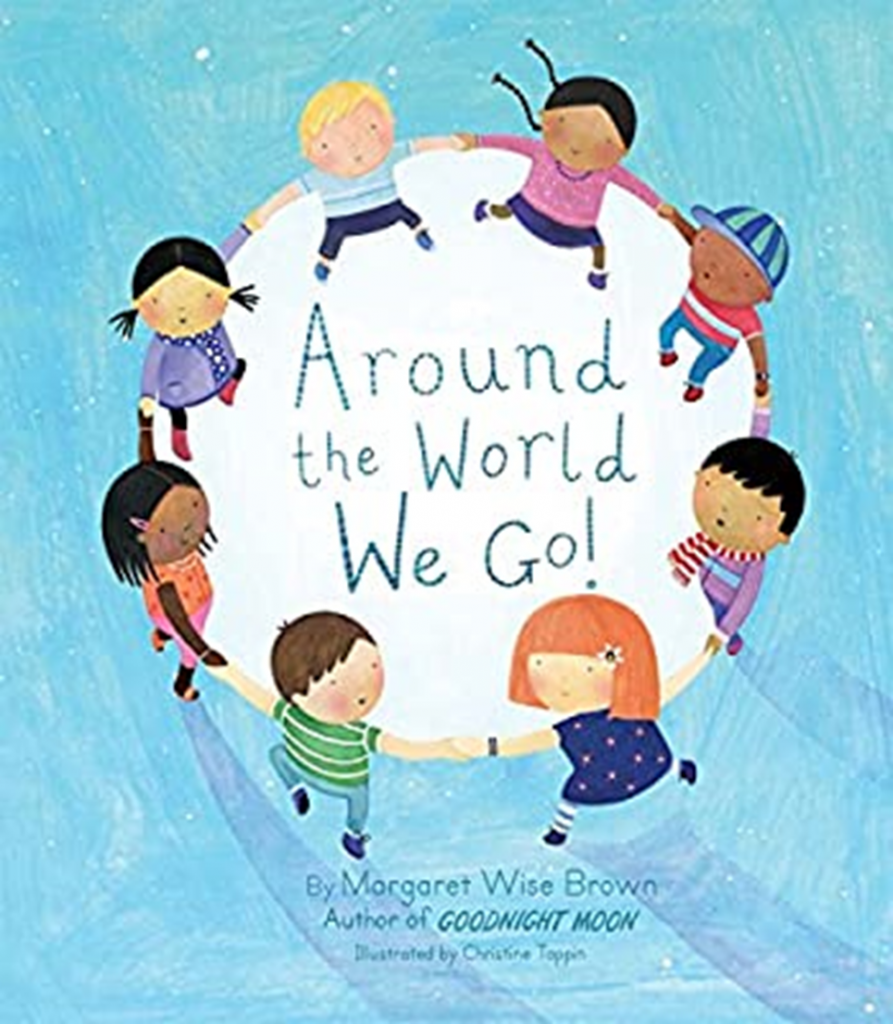
Discussion: some ideas to encourage the children to think and talk.
Different cultures and countries – greetings, customs, dress, languages – children developing a respect and appreciation for diversity.
Some things are different but there’s so much that we share no matter where we are from – family, friendship, sharing, music, art, playing, dance and a feeling of home.
Habits of Mind: Metacognition (thinking about our thinking – not being too impulsive)
Listening with Empathy and Understanding (looking at someone’s face and really thinking about what they are saying)
Paintings – some from AGWA that were painted by Indigenous Australian artists that tell stories of the artists’ homes and families and one from the Art Institute of Chicago by Edward Hopper. He painted fabulous houses!

She has painted her home in the Western Desert and her happy childhood living a nomadic life.
Her family were hunters and gatherers (see how she’s made the hands big in the picture because their hands were very important to them helping them to find food and water to survive in the hot, dry desert.)
Take a slow look.
Let your eyes go for a walk around the painting?
See
What can you see? Children? Animals? Water? Plants? Patterns? Lines? Colours? Can you see houses?
Think
What do you think is happening? How do you feel when you look at this painting?
Wonder
I wonder why there’s no houses in the picture?
What would you like to ask the artist if you could?
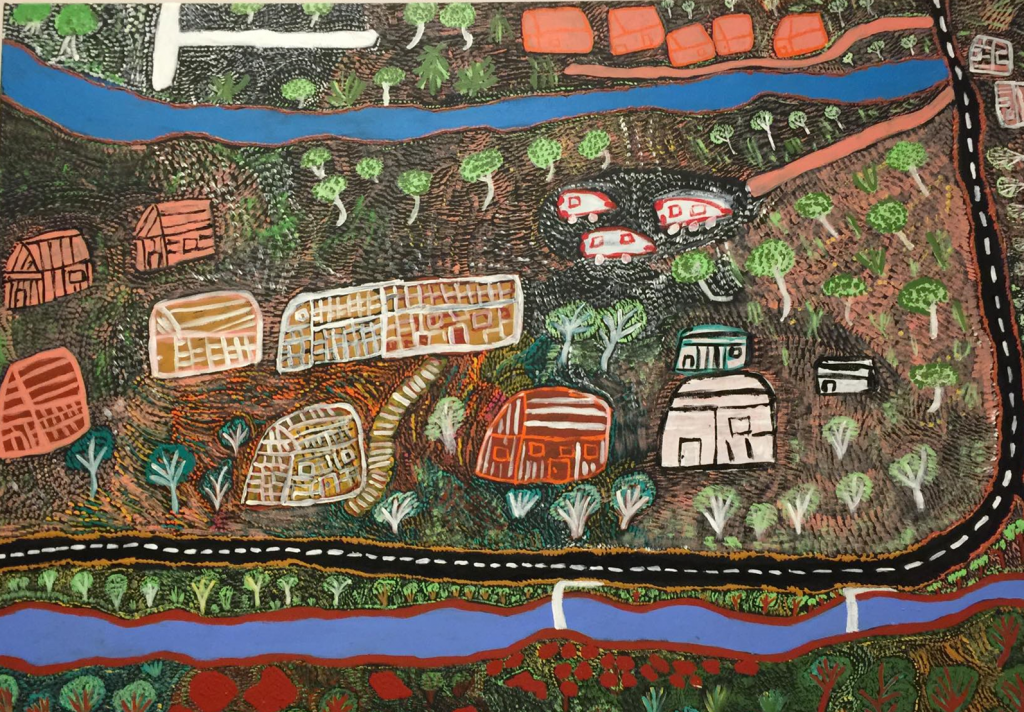
Violet Samson 2017
She has painted her home town.
What can you see?
Why do you think she liked to paint her home?
Is there something that you wonder about this picture?
Which little house would you like to live in?

‘The Rainmaker’
By Queenie McKenzie, a Western Australian Aboriginal woman in 1998.
Painted with ochre and natural pigments that she dug herself. She loved the colour pink!
This was her home country where she was born under a tree.
What can you see?
There’s no houses in this painting, how can she think of this land as her home? Why is it called The Rainmaker?
(Boab tree gives water)
I wonder what patterns you can find in this painting?
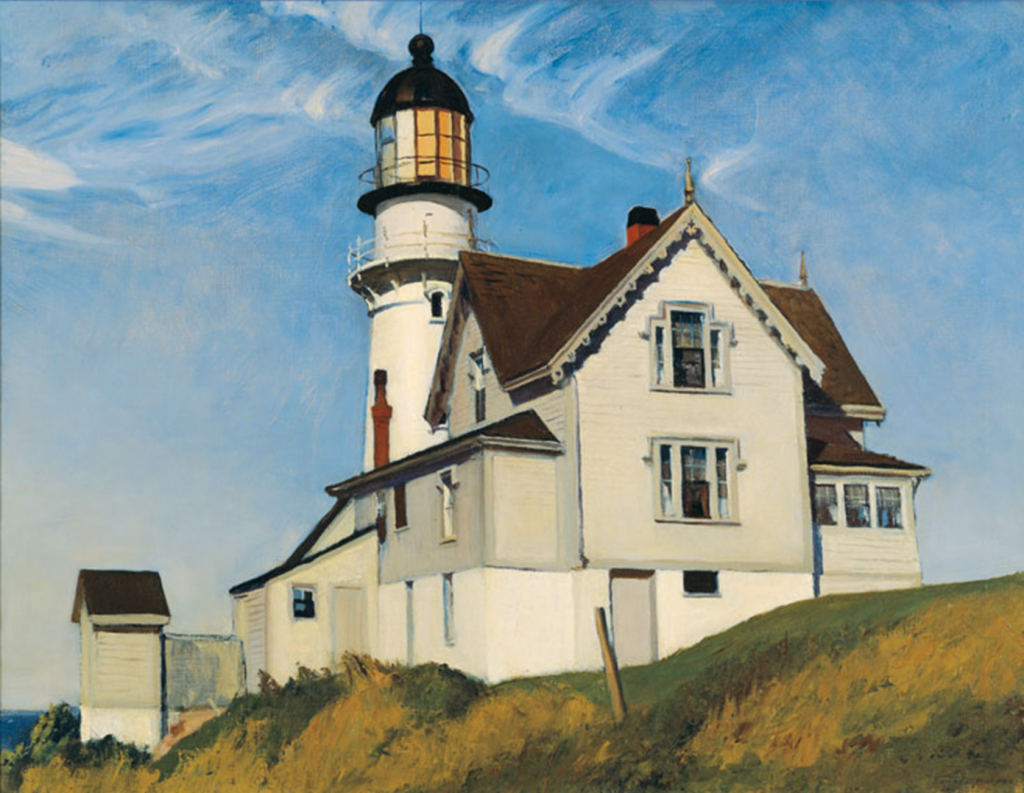
Captain Upton’s House Edward Hopper 1927
We’re going to take a slow look at this painting and see, think and wonder about it.
Edward Hopper loved to paint houses near the sea. How can you tell that this house is near the sea?
What else can you see? Vertical lines? Horizontal lines? Diagonal lines? Curved lines in the natural landscape? What shapes can you see?
Who do you think lives here? The title of a painting often gives us clues to what it’s about.
What do you think Captain Upton’s job might be?
Do you think that it was his house? His home? or both?
What makes you say that?
What’s the difference between a house and a home?
What do you wonder about this painting?
I wonder if you would like to live in this house? Why or why not?
I wonder which room you would like to be yours?
How does this painting make you feel?
After the discussion about the story and the paintings, bring the conversation back to the children and their homes and what makes their home special..
Activity: let the children draw their home, inside or out and draw what/ who is important to them and their lives.
Now a fun song to finish: ‘Hello from All the Children of the World’

You May Also Like
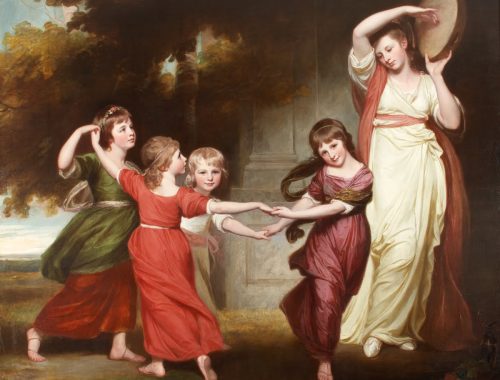
Siblings, Space and Serenity Now … ‘The Gower Family’ by George Romney 1776
April 8, 2020
Start with Art Education
March 25, 2020
